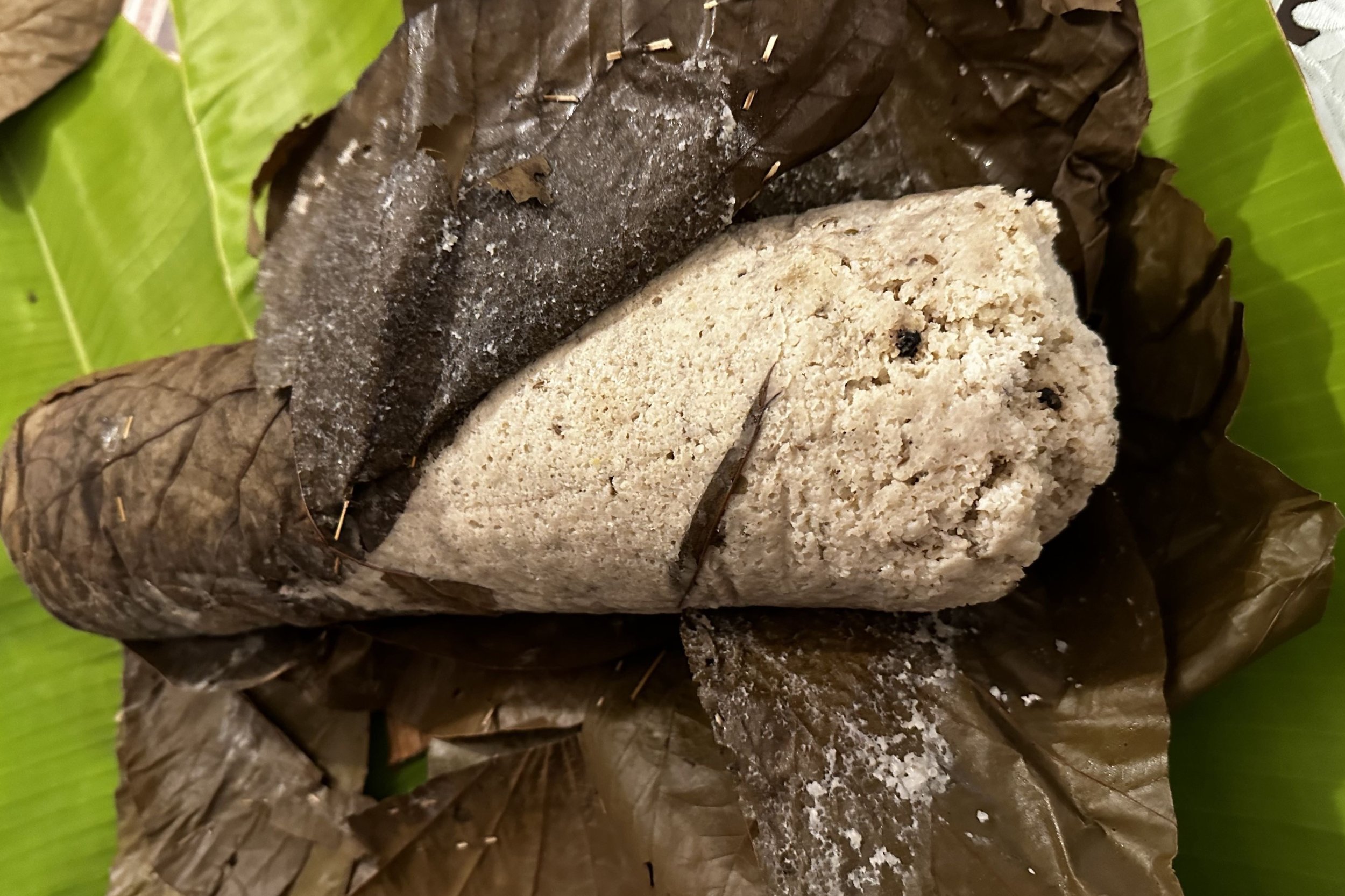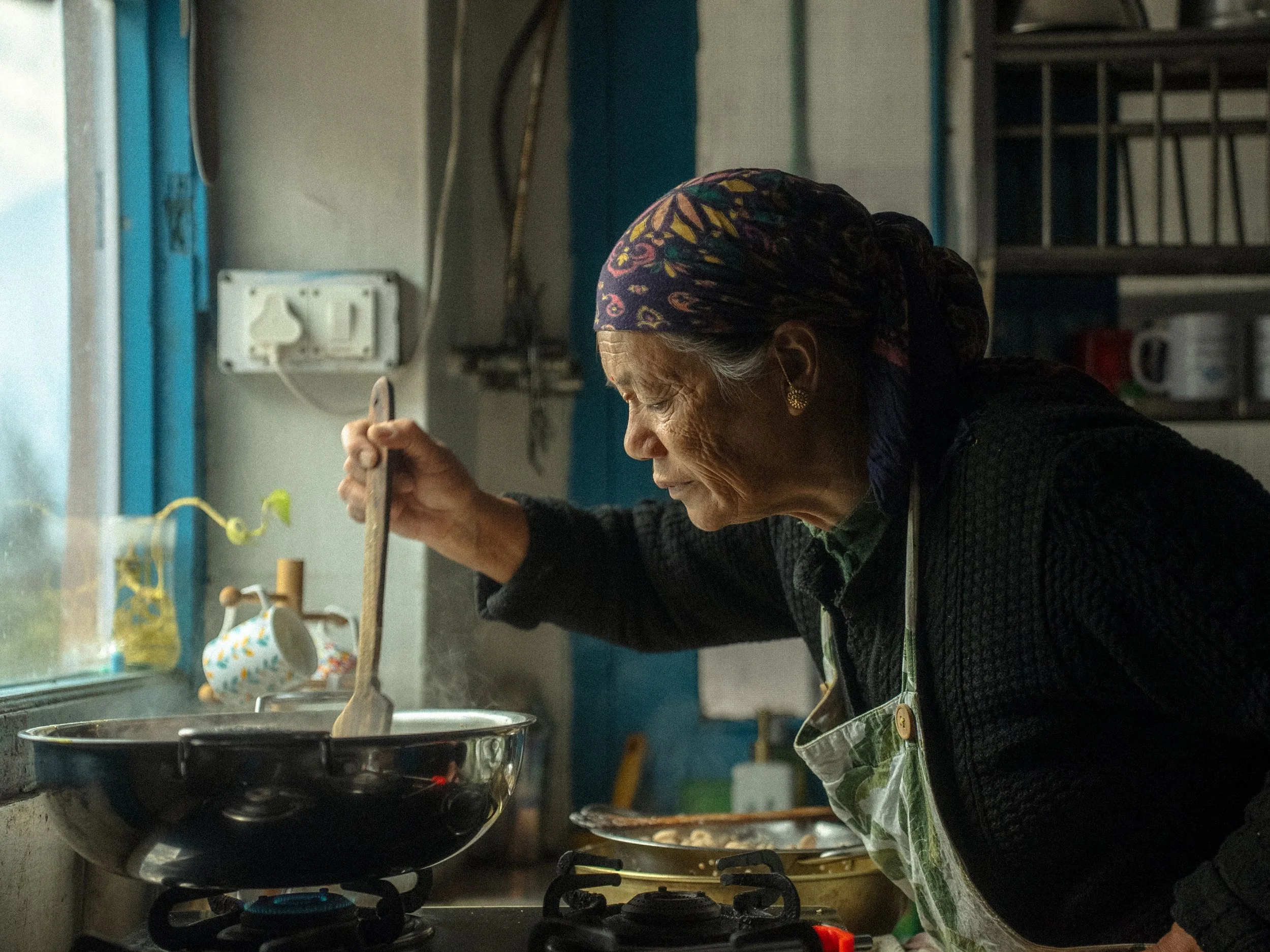Is this India's Most Unusual Idli?

The legendary Kanchipuram kovil idli is famed for its size (it is possibly the largest in the world) and for being unlike all other idlis in the country. On World Idli Day (march 30), Indrani Ghose takes us on a temple run to Kanchipuram for kovil idli prasadam.
It is well past noon as I hop-skip-and-jump barefoot across the scorching temple grounds, toward the temple’s prasadam counter. Swamiji at the counter hands over a foot-long prasadam, weighing about two kilos, with a gentle reminder of its two-day shelf life. My hands struggle under the weight, as I balance it on one arm, extracting a 500 rupee note from my purse with the other.
For the remainder of my journey, I cradle the prasadam like a newborn, navigating my way to the exit of Varadharaja Perumal Temple in Kanchipuram. The legendary Kanchipuram kovil idli or Kanchi idli is famed for its size (it is possibly the largest in the world) and for being unlike all other idlis in the country. (Read here about another unusual idli). My first attempt at securing the idli was rebuffed earlier that morning, post-darshan, and I was instructed to return at noon.
The foot-long idli is served as prasad at the Varadharaja Perumal Temple in Kanchipuram. Photos credit: Indrani Ghose
In India, various temples are known for their unique temple foods, dedicated to the temple deity. Alongside seeking blessings, partaking in prasad is a pivotal part of the temple visit. This prasad manifests itself in diverse forms: there is the iconic laddu at the Venkateshwara Swami Temple in Tirupati, and the mahaprasad for Jagannath Temple in Puri. My quest for temple cuisine led me to this kovil idli (literally, temple idli) offered to lord Vishnu at the Varadharaja Perumal temple in Kanchipuram.
At home, I carefully peel away three layers of mantharai (bauhinia creeper/ orchid lily) leaves until the idli revealed itself — six inches in diameter, with a yellow-brown hue, adorned with spices and various seasonings. I slice the cone-shaped idli into thick discs, and share them with my neighbours. The remainder is savoured with chutney powder. Surprisingly, it is delightful on its own, in the absence of any embellishments, with a flavour entirely unique to itself.
Temple food isn't just delicious; it is healthy. It is believed that these idlis were presented as ritualistic offerings to the deity, going back as far as the Pallavas, who ruled over the southern region of India from 275 CE onwards. Food historian Rakesh Raghunathan says, “There are no records or inscriptions within the temple about this idli, but the cook at the temple’s kitchen says this practice has been around for over six hundred years.” Another story claims that a Vijayanagar king ordered this offering for the deity, and today’s cooks follow that same centuries-old recipe.
The Kanchi idli contains raw rice, urad dal, fenugreek seeds, whole pepper, whole cumin seeds, dry ginger, asafoetida, salt, fresh curry leaves and groundnut oil. Preparation begins a day in advance — raw rice, urad dal, and fenugreek seeds are ground to a grainy batter that is left to ferment for seven to eight hours. Once fermented, pepper, cumin seeds, dry ginger powder, asafoetida, salt, and groundnut oil are mixed in. The batter is poured into bamboo baskets (called kudalai) lined with three layers of mantharai leaves. Is is then steamed, for approximately two hours, early in the morning.
The idli batter is wrapped in mantharai leaves and steamed in cane baskets.
The idlis can be cut into discs, like cake, and eaten plain or with a chutney.
The fascinating thing about these idlis is that their production is almost entirely ‘sustainable’. “Records mention that the entire Kanchipuram region was once surrounded by bamboo forests. They used locally available materials to make cane baskets, then stitched and folded mantharai leaves to line the cane baskets that hold the batter while steaming,” explains Rakesh.
Kanchi idli is best eaten at the temple. These days, you can find variations of the idli in restaurants too. Despite managing to incorporate most of the ingredients, its true essence seems to be elusive. Perhaps the missing element is the profound devotion with which the offering is presented to the deity.
Indrani Ghose is a travel blogger from Bengaluru.
ALSO ON GOYA












